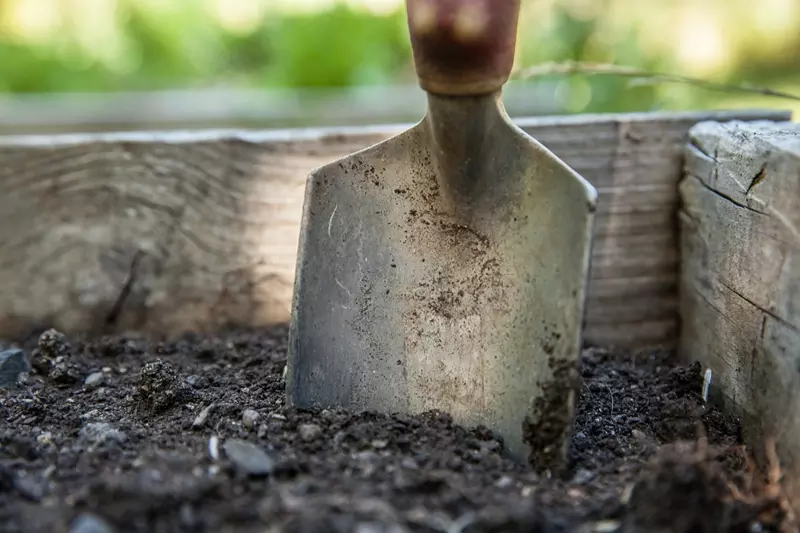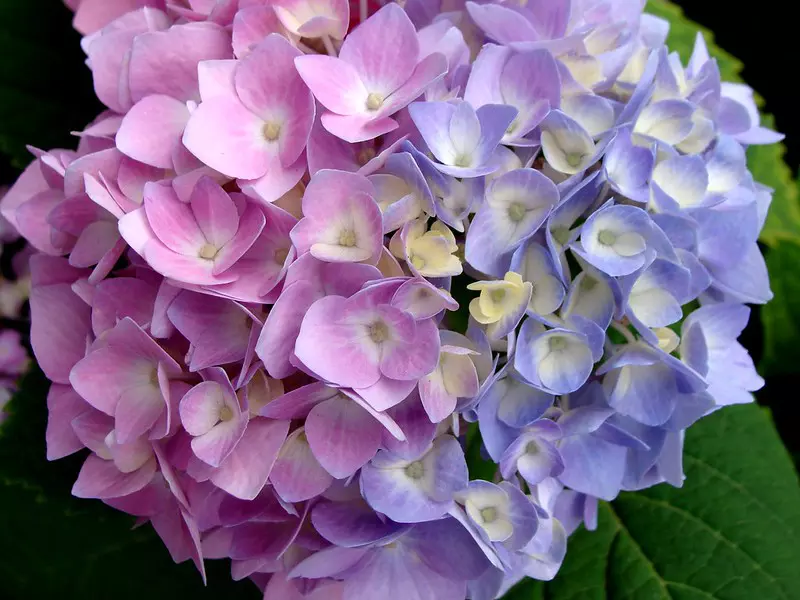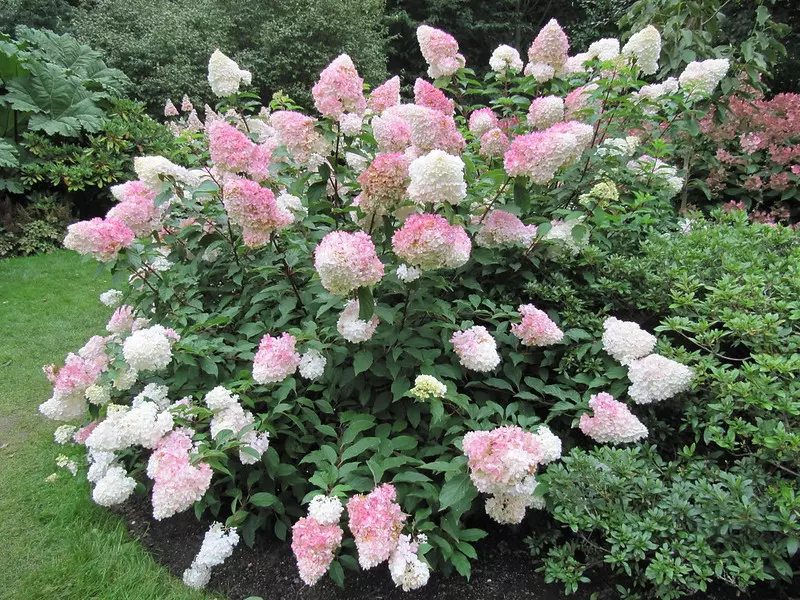
Optimal Soil for Thriving Hydrangeas: A Comprehensive Guide
Discover the best soil for growing healthy hydrangeas. Learn how to create optimal soil conditions and maintain them for vibrant blooms.
Read MoreHydrangeas are renowned for their ability to display a spectrum of colours, from vibrant blues to deep pinks. Gardeners can influence these hues through specific cultivation techniques. This article explores the methods to manipulate hydrangea flower colours effectively.
Hydrangeas are celebrated for their captivating blooms, which can range from serene blues to vibrant pinks. This remarkable colour variation is influenced by several key factors, including soil pH, aluminium availability, and the plant's genetic makeup. By understanding these elements, gardeners can effectively manage and even alter the hues of their hydrangea flowers.

The pH level of the soil is a critical determinant of hydrangea flower colour. It affects the plant's ability to absorb aluminium, a metal that plays a significant role in colour development.
Regular soil testing is essential for gardeners aiming to influence hydrangea colour, as it allows for informed adjustments to soil pH.
Aluminium ions are pivotal in the development of blue pigmentation in hydrangea flowers. The plant's uptake of aluminium is directly influenced by soil pH:
Gardeners can manipulate flower colour by adjusting soil pH to control aluminium availability.
While soil conditions significantly influence hydrangea colour, the plant's genetic makeup also plays a crucial role:
Understanding the genetic characteristics of your hydrangea is essential when attempting to alter its flower colour.
Beyond soil chemistry and genetics, external environmental conditions can impact hydrangea colour:
While these factors are less controllable, being aware of them can help gardeners set realistic expectations for their hydrangea blooms.
The enchanting colour variations of hydrangea flowers result from a complex interplay of soil pH, aluminium availability, genetic factors, and environmental conditions. By understanding and managing these elements, gardeners can influence the hues of their hydrangeas, creating a personalised and vibrant garden display. Regular soil testing, appropriate soil amendments, and selecting suitable hydrangea varieties are key steps in achieving the desired flower colours.
The colour of flowers in your garden is not solely determined by plant genetics; soil chemistry, particularly pH levels, plays a significant role. Understanding the relationship between soil pH and flower colour can empower gardeners to influence bloom hues, enhancing the aesthetic appeal of their landscapes.
Soil pH measures the acidity or alkalinity of the soil on a scale from 0 to 14, with 7 being neutral. Values below 7 indicate acidity, while those above 7 denote alkalinity. Soil pH affects nutrient availability and uptake, influencing various plant physiological processes.
While many flowering plants maintain consistent bloom colours regardless of soil pH, certain species, notably hydrangeas, exhibit significant colour variations based on soil acidity or alkalinity.
Hydrangea macrophylla, commonly known as bigleaf hydrangea, is renowned for its ability to change flower colour in response to soil pH:
This colour change is attributed to the presence of anthocyanin pigments in the flowers, which react with aluminium ions absorbed from the soil.
Gardeners can modify soil pH to achieve desired flower colours, especially in hydrangeas:
It's essential to adjust soil pH gradually and monitor changes through regular testing to avoid overcorrection.
While manipulating soil pH can influence flower colour in certain species, several factors should be considered:
Soil pH plays a pivotal role in determining the colour of certain flowers, particularly hydrangeas. By understanding and adjusting soil acidity or alkalinity, gardeners can influence bloom hues, creating a dynamic and personalised garden display. Regular soil testing and mindful amendments are key to achieving and maintaining desired flower colours.
The vibrancy and hue of garden flowers are influenced not only by plant genetics but also by soil chemistry, particularly pH levels. By understanding and adjusting soil pH, gardeners can manipulate flower colours, especially in species like hydrangeas that are sensitive to pH variations.
Soil pH measures the acidity or alkalinity of the soil on a scale from 0 to 14, with 7 being neutral. Values below 7 indicate acidity, while those above 7 denote alkalinity. Soil pH affects nutrient availability and uptake, influencing various plant physiological processes.
While many flowering plants maintain consistent bloom colours regardless of soil pH, certain species, notably hydrangeas, exhibit significant colour variations based on soil acidity or alkalinity.
Hydrangea macrophylla, commonly known as bigleaf hydrangea, is renowned for its ability to change flower colour in response to soil pH:
This colour change is attributed to the presence of anthocyanin pigments in the flowers, which react with aluminium ions absorbed from the soil.
Gardeners can modify soil pH to achieve desired flower colours, especially in hydrangeas:
It's essential to adjust soil pH gradually and monitor changes through regular testing to avoid overcorrection.
While manipulating soil pH can influence flower colour in certain species, several factors should be considered:
Soil pH plays a pivotal role in determining the colour of certain flowers, particularly hydrangeas. By understanding and adjusting soil acidity or alkalinity, gardeners can influence bloom hues, creating a dynamic and personalised garden display. Regular soil testing and mindful amendments are key to achieving and maintaining desired flower colours.
Hydrangeas are renowned for their ability to display a spectrum of flower colours, ranging from vivid blues to soft pinks. This remarkable colour variation is primarily influenced by the presence and availability of aluminium in the soil. Understanding the role of aluminium in hydrangea colour change can empower gardeners to cultivate blooms in their desired hues.
The pigmentation of hydrangea flowers is closely linked to the plant's uptake of aluminium ions from the soil. The availability of these ions is largely determined by the soil's pH level:
This colour change is attributed to the presence of anthocyanin pigments in the flowers, which react with aluminium ions absorbed from the soil.
The interaction between aluminium ions and anthocyanin pigments within the hydrangea's sepals leads to the formation of complexes that result in blue pigmentation. In the absence of sufficient aluminium, these pigments manifest as pink or red. The soil's pH level plays a crucial role in this process:
Gardeners can manipulate hydrangea flower colour by adjusting soil pH and aluminium availability:
It's essential to adjust soil pH gradually and monitor changes through regular testing to avoid overcorrection.
While manipulating soil pH can influence flower colour in certain species, several factors should be considered:
Aluminium plays a pivotal role in determining the colour of hydrangea flowers. By understanding and adjusting soil acidity or alkalinity, gardeners can influence bloom hues, creating a dynamic and personalised garden display. Regular soil testing and mindful amendments are key to achieving and maintaining desired flower colours.
Hydrangeas are cherished for their vibrant and diverse bloom colours. Achieving and maintaining these hues requires not only understanding soil pH but also implementing appropriate fertilisation practices. This article delves into how fertilisation influences hydrangea colour and offers guidance on optimising bloom vibrancy through proper nutrient management.
Fertilisation provides essential nutrients that support hydrangea health and bloom production. The type and balance of fertiliser used can significantly impact flower colour, especially in varieties sensitive to soil pH and nutrient availability.
While all macronutrients are vital, certain elements play a more direct role in determining hydrangea bloom colour:
To achieve specific hydrangea bloom colours, consider the following fertilisation approaches:
Proper timing and application methods enhance fertiliser effectiveness:
When fertilising hydrangeas for colour optimisation, keep the following in mind:
Fertilisation plays a crucial role in achieving and maintaining the desired colour of hydrangea blooms. By selecting appropriate fertilisers, adjusting soil pH thoughtfully, and timing applications correctly, gardeners can enhance the vibrancy and beauty of their hydrangeas, creating a stunning and personalised garden display.
Hydrangeas are celebrated for their ability to exhibit a spectrum of flower colours, influenced by factors such as soil pH and aluminium availability. While gardeners may seek to manipulate these variables to achieve desired hues, it's essential to understand the inherent considerations and limitations associated with such practices.
Not all hydrangea species respond to soil pH adjustments:
Understanding the specific hydrangea species in your garden is crucial before attempting to modify bloom colours.
Several environmental elements can influence the effectiveness of colour manipulation:
Altering hydrangea bloom colour is not an immediate process. Adjustments to soil pH and aluminium availability can take several months or even a full growing season to manifest in flower colour changes.
The existing soil composition can impact the success of pH adjustments:
While focusing on bloom colour, it's vital not to compromise overall plant health:
While manipulating hydrangea flower colour through soil pH and aluminium availability is possible, it involves several considerations and limitations. Gardeners should assess species-specific responses, environmental factors, soil composition, and plant health to achieve desired outcomes effectively. Patience and careful monitoring are essential in this nuanced gardening endeavour.
Yes, it's possible to alter hydrangea bloom colour by adjusting soil pH and aluminium levels. However, results may take several months to a full growing season to become noticeable, especially in mature plants.
Some varieties don't respond to pH changes, such as white hydrangeas. It's also possible that your pH adjustment wasn't sufficient, or the soil has a high buffering capacity, resisting change. Regular testing and patience are essential.
Lower the soil pH to below 5.5 using aluminium sulfate or organic matter like pine needles. Ensure aluminium is available in the soil, as it's key to producing blue pigments in the blooms.
Raise the soil pH above 6.5 using garden lime or dolomitic lime. This limits aluminium availability to the plant, encouraging pink or red blooms.
Yes, purple hues often appear when soil pH is around 5.5 to 6.2, a middle range where aluminium is partially available. Some cultivars also naturally lean toward purple.
Hydrangea macrophylla (mophead and lacecap types) respond to pH changes. Other types, like Hydrangea paniculata or Hydrangea arborescens, generally maintain white or stable-colour blooms regardless of soil chemistry.
Yes. Fertilisers high in phosphorus can block aluminium absorption, causing pinker blooms. For blue flowers, use low-phosphorus blends, like 12-4-8, to encourage aluminium uptake.
It’s challenging. Alkaline soils limit aluminium availability. Consider growing in containers with acidic soil or amending garden beds with acidic materials to achieve blue blooms.
Fading or greening blooms can result from aging flowers, strong sunlight, or nutrient imbalances. It's often unrelated to soil pH and may resolve with better care and hydration.
When applied correctly, aluminium (via aluminium sulfate) is safe for hydrangeas. However, excessive use can affect overall soil health. Avoid overapplication and always follow dosage guidelines.
Test your soil at least twice a year - once in early spring and again mid-summer. This ensures your amendments are working and prevents overcorrection.
Yes. Cooler temperatures tend to intensify bloom colours, while extreme heat can wash them out. Direct sunlight may also cause colour fading or bleaching over time.
Yes, especially if different parts of the root zone have varied soil pH. This often occurs in large beds or unevenly amended soils, producing a mix of pink, blue, and purple flowers.
Absolutely. To lower pH naturally, use composted oak leaves, pine needles, or coffee grounds. To raise pH, add crushed eggshells or wood ash sparingly.
Changes can take anywhere from a few months to a full growing season. Be patient, and continue regular soil monitoring for best results.
Hydrangea colour manipulation is an exciting way to personalise your garden, offering a dynamic display of hues ranging from vibrant blues to striking pinks. By understanding the impact of soil pH, aluminium availability, and fertilisation practices, gardeners can effectively influence their hydrangeas' colours.
With patience, regular soil testing, and proper care, your hydrangeas can become a stunning focal point that reflects your desired aesthetic. Whether you prefer calming blues or cheerful pinks, the power to customise your garden's palette is at your fingertips.

Discover the best soil for growing healthy hydrangeas. Learn how to create optimal soil conditions and maintain them for vibrant blooms.
Read More
A complete guide to Hydrangea macrophylla, including planting, pruning, soil adjustments, eco-friendly pest management, propagation, and garden design ideas.
Read More
Discover the complete care and maintenance guide for Hydrangea paniculata 'Vanille Fraise', including planting tips, pruning advice, and pest management.
Read More